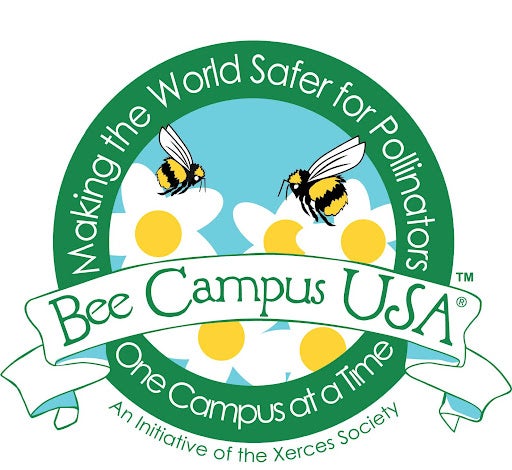FOR IMMEDIATE RELEASE COLLEGE PARK, March 3, 2023 — The University of Maryland Arboretum and Botanical Garden is excited to announce a new collaborative effort on campus, seeking to earn the distinction of ‘Bee Campus USA’ for the University of Maryland. This effort is led by PollinaTerps, a collective group of University of Maryland students, staff, and faculty, including entomological, horticultural, and sustainability professionals. Together, we are working to enhance support for native pollinators and their habitats on campus and in our communities. The Bee Campus USA program, administered by The Xerces Society for Invertebrate Conservation, is designed to improve habitat value of public spaces and raise awareness of the vital role that pollinators play in the health of our environment, our food systems, and society.

The goal of this initiative, in conjunction with ‘Bee City USA’ efforts in The City of College Park, is to promote sustainable landscaping practices and to establish thriving pollinator habitats on and off campus. By creating and enhancing gardens and other habitats with pollinator-friendly native plants and wildflowers, we aim to provide supportive ecosystems for critical pollinators, including native bees and butterflies. The entire University of Maryland campus is a recognized Arboretum and Botanical Garden dedicated to healthy outdoor spaces and environmental stewardship through a diverse collection of campus landscapes for our community. Becoming a Bee Campus USA affiliate will help enhance our campus' aesthetic and promote awareness of conservation and appreciation for our natural environment. This effort will be an enriching, worthwhile endeavor for our university community, the State of Maryland, and The City of College Park.
By earning Bee Campus USA recognition, The University of Maryland will be joining seven other recognized Bee Campuses in the Big Ten Conference. Multiple native bee species enjoying the nectar of Bee Balm, Monarda fistulosa, an important Maryland native wildflower and official county herb of Prince George’s County, Photo by Michael Ellis. Attractive outdoor spaces featuring pollinator-friendly landscaping have significant sustainability benefits, contribute to our own well-being, and are an important way for our campus to support the environment. By creating habitat for pollinators featuring native plants that local insects rely on, we are supporting biodiversity, the health of our local ecosystems, and local food webs. This effort will benefit our students and campus, as well as the larger community, by bolstering the appearance and resiliency of our local environment. "It is an exciting effort, to be a part of a community in support of a sustainable, beautiful campus while benefiting pollinators and the health of our local environment. It’s great to see the enthusiasm for this movement from so many departments, students, and groups on campus and in College Park. I really enjoy gardening with native plants and learning the positive impacts that pollinator-friendly landscaping can have on our ecosystems,” says Conservation Landscapes Intern Logan Martin, a Sophomore Environmental Horticulture Student.
For more information on the PollinaTerps Bee Campus USA effort, please contact Michael Ellis, Horticulturist and Chair of the PollinaTerps Bee Campus Committee, mellis@umd.edu.


